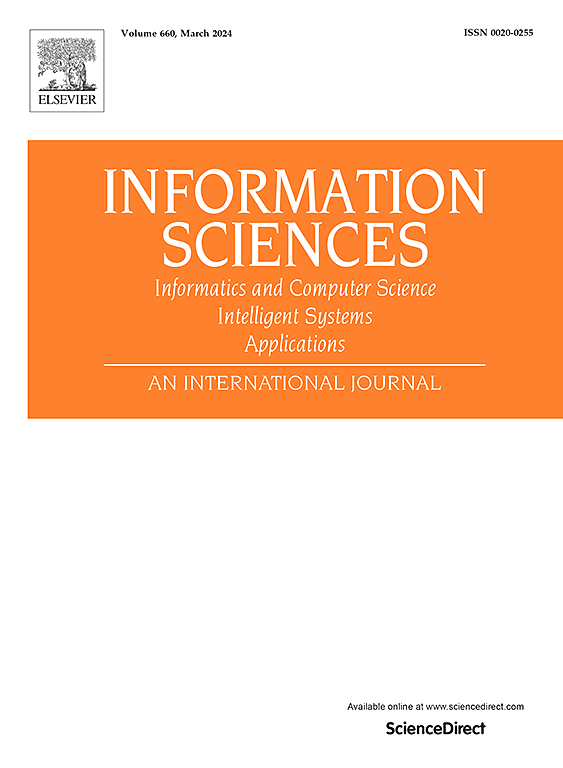Dual-channel dynamic event-triggered-based flocking control for nonlinear multi-agent systems with connectivity preservation
IF 6.8
1区 计算机科学
0 COMPUTER SCIENCE, INFORMATION SYSTEMS
引用次数: 0
Abstract
The flocking control problem of NMASs with network connectivity preserving under a dual-channel dynamic event-triggered mechanism (DDETM) is investigated in this paper. Firstly, a novel DDETM is developed to minimize the transmission of redundant information. The communication and controller channels are equipped with an event monitoring mechanism. This approach not only minimizes the consumption of information transmission resources but also reduces the controller updates. In contrast to the single-channel ETM, incorporating two auxiliary variables increases the triggering intervals. Secondly, a novel network connectivity preservation mechanism via an improved potential function is designed to prevent flocking separation. This mechanism operates independently of the initial topology's connectivity. The DDETM framework integrates both the dual-channel scheme and the potential function. This integration constrains the distance between agents to avoid collisions and accelerate the convergence of the flocking behavior. Sufficient conditions for asymptotic flocking in NMASs are derived. Finally, a software verification platform for UAVs is established, and the software-in-the-loop (SIL) experiment of UAVs is conducted to showcase the feasibility and effectiveness of the proposed scheme.
非线性多智能体系统的双通道动态事件触发群集控制
研究了双通道动态事件触发机制(DDETM)下具有网络连通性的NMASs的群集控制问题。首先,提出了一种新的DDETM,以减少冗余信息的传输。通信通道和控制器通道具有事件监控机制。这种方法既能最大限度地减少信息传输资源的消耗,又能减少控制器的更新。与单通道ETM相比,结合两个辅助变量增加了触发间隔。其次,设计了一种基于改进势函数的网络连通性保持机制,以防止群集分离。该机制独立于初始拓扑的连通性而运行。DDETM框架集成了双通道方案和势函数。这种集成限制了智能体之间的距离,避免了碰撞,加速了群集行为的收敛。导出了NMASs中渐近聚集的充分条件。最后,建立了无人机软件验证平台,并对无人机进行了软件在环实验,验证了所提方案的可行性和有效性。
本文章由计算机程序翻译,如有差异,请以英文原文为准。
求助全文
约1分钟内获得全文
求助全文
来源期刊

Information Sciences
工程技术-计算机:信息系统
CiteScore
14.00
自引率
17.30%
发文量
1322
审稿时长
10.4 months
期刊介绍:
Informatics and Computer Science Intelligent Systems Applications is an esteemed international journal that focuses on publishing original and creative research findings in the field of information sciences. We also feature a limited number of timely tutorial and surveying contributions.
Our journal aims to cater to a diverse audience, including researchers, developers, managers, strategic planners, graduate students, and anyone interested in staying up-to-date with cutting-edge research in information science, knowledge engineering, and intelligent systems. While readers are expected to share a common interest in information science, they come from varying backgrounds such as engineering, mathematics, statistics, physics, computer science, cell biology, molecular biology, management science, cognitive science, neurobiology, behavioral sciences, and biochemistry.
 求助内容:
求助内容: 应助结果提醒方式:
应助结果提醒方式:


